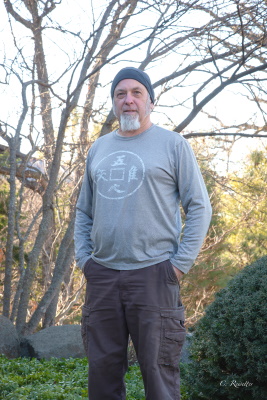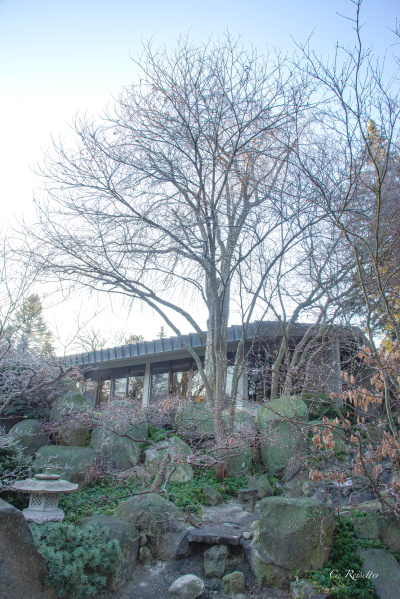Editor’s note: If you desire an opportunity to deepen your “life well lived,” visit Anderson Japanese Gardens, in Rockford, IL. There are 12 acres of plantings, streams, a waterfall, paths, and a koi pond. Opening day is Friday, April 18, 2025. Call 815-229-9390 to verify if the 28-foot-tall, Weeping Higan Cherry is budding or in bloom.
 Natural Land Institute’s Legacy Tree Program announces the Weeping Higan Cherry (Prunus pendula, formerly Prunus subhirtella ‘Pendula’) as the 2025 March Tree of the Month. Nominated by Tim Gruner, right, Garden Curator and Head of Horticulture at Anderson Japanese Gardens, in Rockford, IL, this tree measures a height of 28 feet, with a trunk circumference of 46.2 inches, and an average crown spread of 30 feet.
Natural Land Institute’s Legacy Tree Program announces the Weeping Higan Cherry (Prunus pendula, formerly Prunus subhirtella ‘Pendula’) as the 2025 March Tree of the Month. Nominated by Tim Gruner, right, Garden Curator and Head of Horticulture at Anderson Japanese Gardens, in Rockford, IL, this tree measures a height of 28 feet, with a trunk circumference of 46.2 inches, and an average crown spread of 30 feet.
Weeping Higan Cherry is native to Japan but is planted around the world in similar climates, because of its beautiful, spring bloom and graceful, pendulous branches. It is iconic in Japanese-themed gardens. This tree is the largest known in the region. It grows just off the northwest corner of the Spring Creek Partners office, overlooking Rockford’s renowned Anderson Japanese Gardens, 318 Spring Creek Road, Rockford, 61107.
As one of several species and many cultivars of “flowering cherries,” their ephemeral bloom in Japan is the equivalent of holiday–one makes time to experience their bloom, in a practice known as hanami. From bud-through-bloom to raining petals as the flowering is done, they are a symbol of our short lives well lived.
“We bring you this as our Legacy Tree, to challenge everyone to make time and experience the many beautiful trees around the region, that will [come] into bloom over the next couple of months,”said Alan Branhagen, Executive Director for Natural Land Institute. “Though Weeping Higan Cherry is not native, it is not invasive…it does provide for pollinators….At least some of our native insects, including the Eastern Tiger Swallowtail butterfly, utilize it as a host plant,” he said. Locally, native related trees include the Black, Choke, and Pin Cherries and American Plum.
Weeping Higan Cherry is usually sold at nurseries as a graft on top of a sweet cherry trunk. Some trees around town have reverted back to the sweet cherry as sprouts from the trunk overtake the graft of weeping branches. Flowers are single and light pink, but there are cultivars with double flowers that look like pendant, pink tutus. The March legacy tree is a full tree with no graft and is a single flowering plant. Few fruits ( tiny cherries) are produced, probably because most cherries need to be cross-pollinated. Remember cloned plants are all the same plant.
Fall color on Weeping Higan Cherry can be lovely shades from apricot-to-oranges and red in late fall–bringing another season of color to the garden.

Visit Anderson Japanese Gardens this spring and see this and the many other spring-flowering trees that provide us (and pollinators) with a riot of color after a long winter. For hours, admissions pricing, and other important information please visit https://andersongardens.org/.
Branhagen encourages everyone to “walk your neighborhood, and visit local wildlands when flowering trees are in bloom…, and start your own version of hanami as a celebration of spring and a life well lived.”